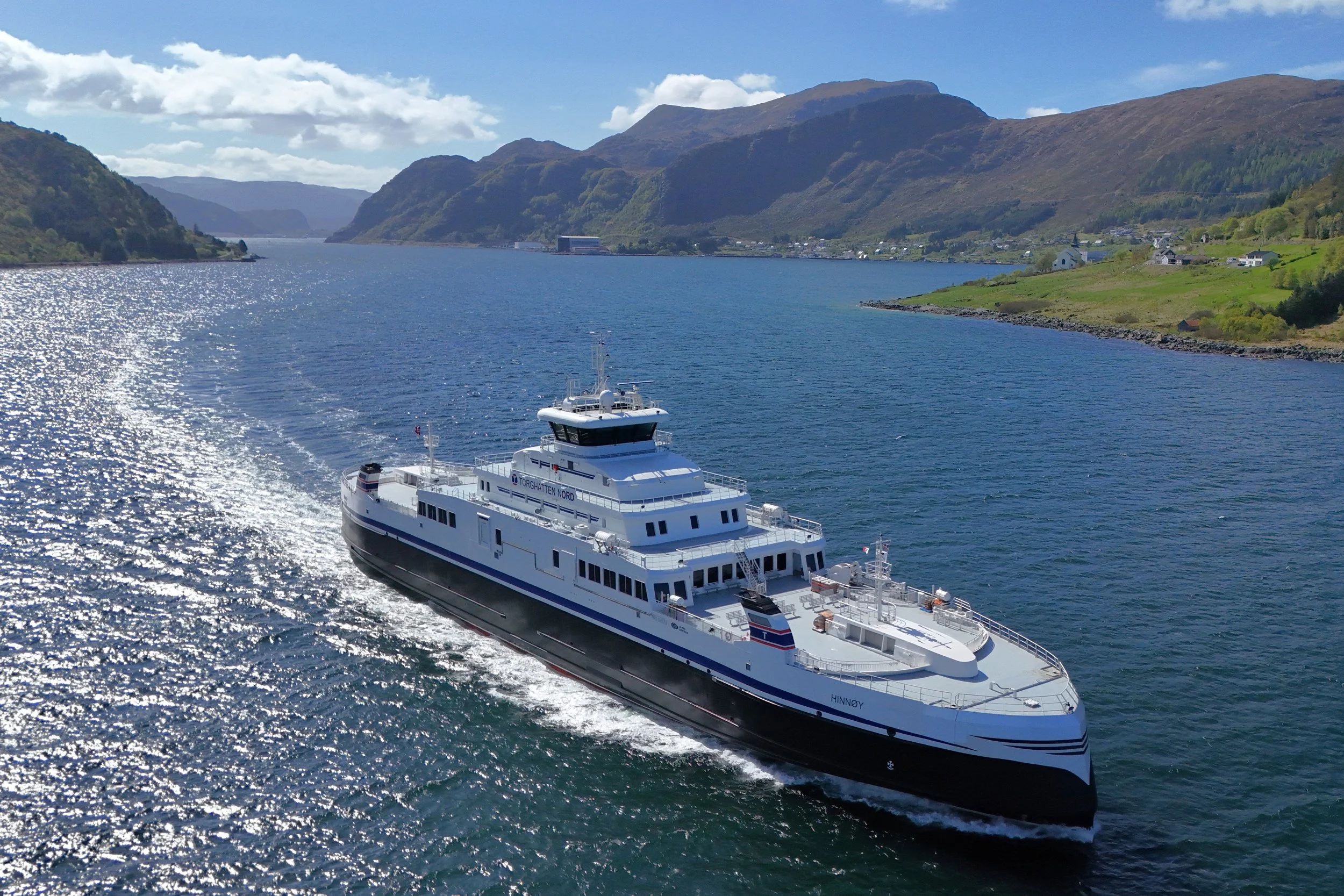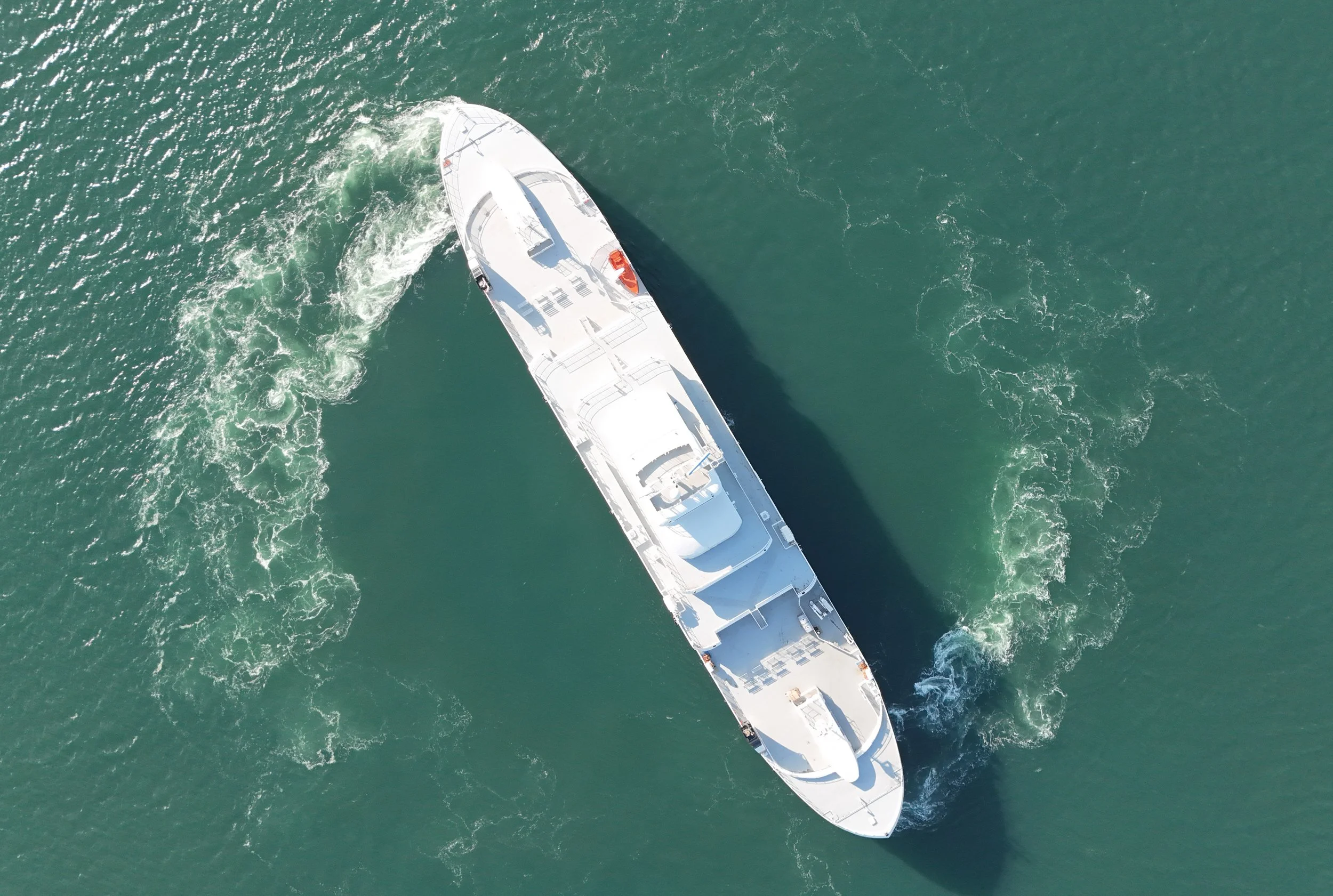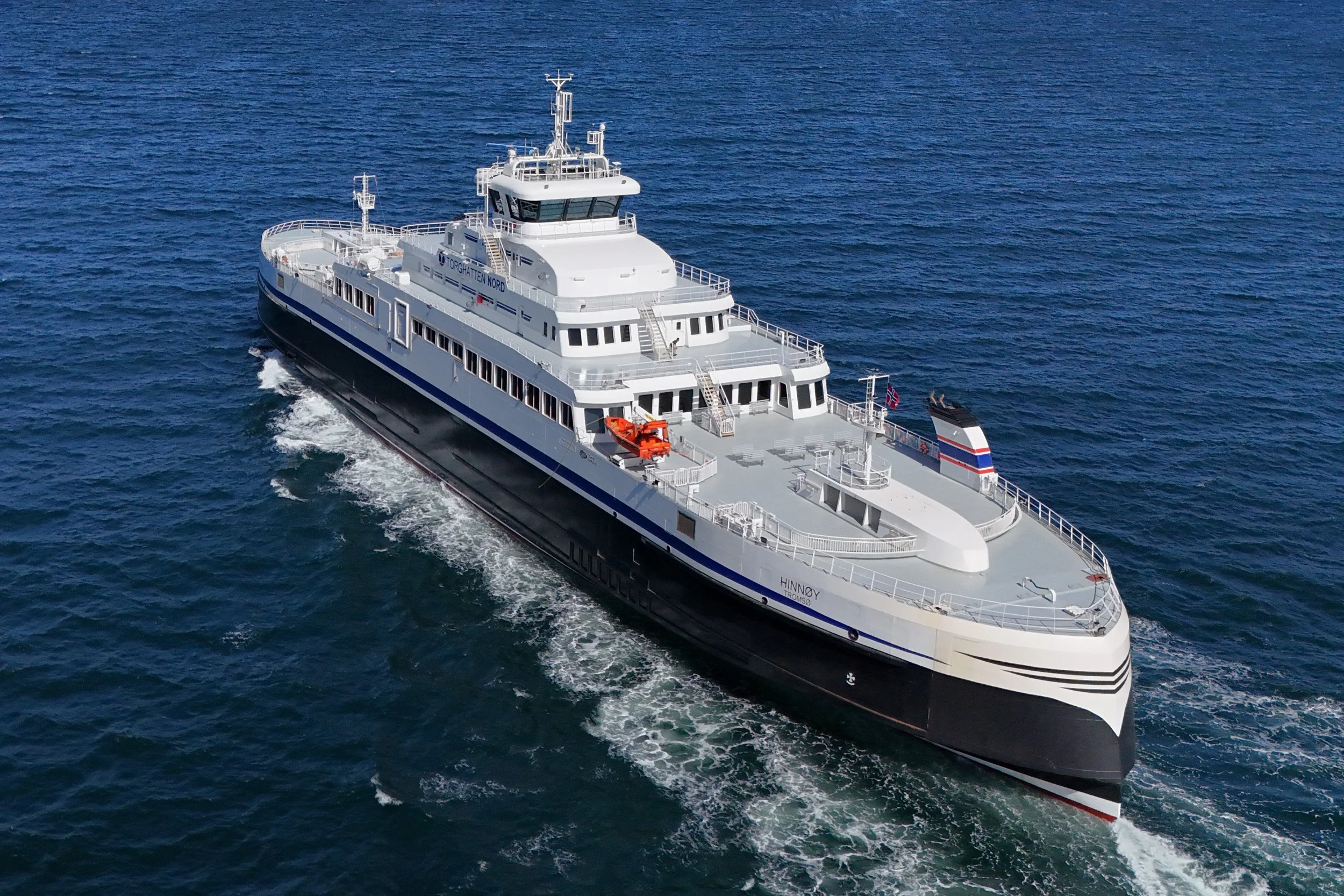HINNØY now in operation on the Bognes - Lødingen route
The all-electric ferry Hinnøy has officially entered service on the Bognes–Lødingen route in Northern Norway, marking a significant milestone in sustainable maritime transport. Since early June, the vessel has been met with praise from passengers and stakeholders alike.
As the designer of Hinnøy, we are proud to see our design NSD120CFc fully completed and in service, a project that we have worked on together with Torghatten from the very first sketch to final delivery. The result is a cutting-edge, environmentally friendly ferry purpose-built for demanding open-water conditions.
Built at Cemre Shipyard, Turkey
Hinnøy was built at the Cemre shipyard in Turkey, known for its modern shipbuilding facilities and expertise in maritime construction. In April, the vessel embarked on its delivery voyage from Istanbul, navigating through European waters before arriving in Lødingen and Northern Norway early May.
Clean Energy and Cutting-Edge Technology
Hinnøy is 117 meters long, with capacity for 120 vehicles on a fully enclosed deck, and can accommodate up to 399 passengers in a spacious and modern lounge.
At the heart of the vessel is a high-capacity battery system that powers the entire one-hour crossing on electricity alone. High-speed shore chargers are installed at both terminals, enabling rapid 14-minute charging. As a backup system, four variable-speed biodiesel generators are installed – two fore and two aft.
The ferry features a double-ended design, with azimuth thrusters at both ends for maximum manoeuvrability and efficiency.
Optimized for Efficiency and Passenger Comfort
Energy efficiency has been a core focus throughout the design. The vessel's low-resistance hull form is optimized for reduced power consumption and superior seakeeping – crucial for crossing open fjord waters. The ferry charges its two water-cooled battery packs after each trip, but the capacity is oversized to extend battery life and reduce charging time.
Once docked, the vessel is automatically secured using an automatic mooring system, and the charging plug is automatically connected in under a minute.
Modern Ro-Ro Access and Passenger Experience
Hinnøy features fast and efficient roll-on/roll-off operations using hydraulically operated bow visors and hinged ramps – both designed by NSD. Shore linkspans rest securely on the ramp lip, bridged by a flap for safe and efficient loading, eliminating the need for manual mooring operations thanks to the automatic mooring system.
Passengers board via stairways or two elevators from the vehicle deck. The passenger deck features a large central café and seating lounges, including 395 seats – some arranged around tables, others near panoramic windows that offer sweeping views of the surrounding scenery. Open fore and aft decks are wind-protected, and pet kennels are available.
Interiors are furnished with sustainable materials, and while the layout follows the traditional fjord ferry concept, the bright, airy décor gives the space a contemporary feel.
Crew Comfort and Bridge Operations
Crew facilities are located on Deck 5 and include cabins for 11 crew members. The crew area also features a mess, dayroom, and gym. Deck 6 houses technical rooms including ventilation systems, control rooms, and ship’s office.
The command bridge on Deck 7 includes two reversible bridge stations with full visibility and is supported by strategically placed CCTV cameras that assist in docking operations, giving the officers precise views of the vessel’s distance to the quay and linkspans.
The entry of Hinnøy into operation marks a significant advancement in zero-emission ferry transport, combining robust design, passenger comfort, and green innovation. As Norway continues to lead in maritime electrification, Hinnøy is a strong example of what the next generation of sustainable transport looks like in practice.




